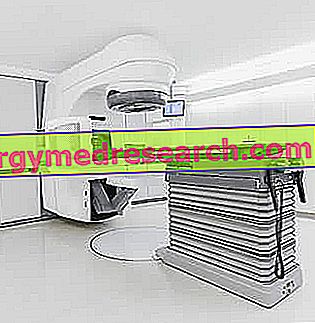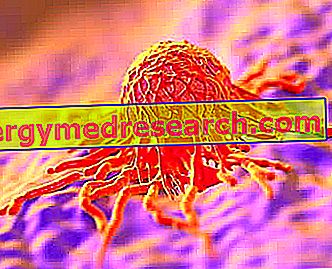What is that
Hadrontherapy - also known as hadron therapy - is a particular advanced form of radiotherapy, used in the treatment of inoperable and / or non-operable tumors that are resistant to other radiotherapy treatments.

Hadrontherapy is a rather sophisticated therapeutic technique, which requires special instruments to be performed. On the Italian territory, it is carried out at the National Center of Hadrontherapy oncology (CNAO) based in Pavia, active since January 1st 2014. It is a structure specifically wanted by the Ministry of Health that deals with the treatment of the tumoral forms mentioned above and, at the same time, it deals with research and development.
Indications
For which tumors is Adrotherapy indicated?
As mentioned, hadron therapy is particularly useful in the treatment of tumors resistant to other radiotherapy and / or hardly operable treatments, which are found in particularly delicate areas of the body where it is not possible to intervene surgically (for example, in the vicinity of vital organs or organs with essential functions for the organism whose removal would be excessively debilitating for the patient).
Unfortunately, however, the number of tumors treatable with hadron therapy is lower than the totality of the currently known cancers, but the fact of being able to treat neoplastic masses localized in organs on which until some time ago it was very difficult - if not impossible - to intervene, certainly represents a great innovation and a huge step forward for anticancer therapy.
However, the following are the tumors that represent the so-called consolidated indications of hadron therapy, ie tumors for which the advantage obtained with the use of this therapy has been demonstrated and supported by different studies:
- Brain tumors;
- Cordomas and chondrosarcomas of the base of the skull and sacral;
- Ocular melanomas;
- Paranasal sinus tumors;
- Salivary gland tumors;
- Mucous melanomas of the high aero-digestive pathways;
- Liver tumors;
- Sarcomas of the soft parts;
- Recurrence of rectal cancer.
For other types of tumors, on the other hand, treatment with hadrotherapy is still in the clinical study phase, although the results obtained so far are more than encouraging. These include pancreatic cancer, glioblastomas and prostate cancer.
Please note
Hadrontherapy should not be considered as an alternative to conventional radiotherapy, but rather as a useful therapeutic strategy for the treatment of:
- Radio-resistant tumors that do not respond, or do not respond sufficiently, to classical radiotherapy;
- Tumors located in very delicate anatomical sites, at the level of which irradiation with conventional radiotherapeutic techniques cannot occur at the doses necessary to completely eliminate the tumor mass, since there is the risk of affecting the adjacent healthy tissues and organs of vital importance for the patient.
How does it work
How does Hadrotherapy work?
Hadrontherapy uses the use of protons and atomic nuclei (called ions) subject to the so-called strong nuclear force and which, for this reason, are called hadrons (from the Greek adrós, whose meaning is "strong").
More precisely, hadron therapy exploits the action of protons and carbon ions that are accelerated in special proton and / or ion accelerators, thus generating particle beams at a given energy. The beams thus produced by the accelerator must then be brought - through a suitable transport system - into the treatment rooms and, finally, directed towards the patient at the tumor to be treated.
Of course, the presence of an extremely precise patient positioning system and a system that allows the controlled release of the right amount of energy needed to treat the tumor is also required.
Furthermore, there is a need to have a three-dimensional plan of personalized treatment for each individual patient, which is obtained through the integration of various images obtained from diagnostic tests such as, CT, magnetic resonance and positron emission tomography (PET).
Hadrons action mechanism
The death of malignant cells is obtained thanks to the energy released by hadrons at the level of diseased cells. This energy, in fact, is able to break the DNA of malignant cells in several points, rendering the mechanisms of cellular self-repair completely useless and thus condemning the cell to certain death.
Advantages
What are the advantages of Adrotherapy?
As mentioned, the main advantage of hadron therapy compared to conventional radiotherapy or other anticancer treatments, lies in the ability to treat tumors in delicate sites that are difficult to reach through conventional anticancer treatments. This is possible because:
- The energy released by the particles (protons and carbon ions) used in hadron therapy is able to affect malignant cells selectively. This means that - when the bundles of particles pass through the patient's body - the damage caused by them is minimal, while it is maximum at the level of the tumor mass, where there is a considerable release of energy that causes the destruction of the diseased cells.
- By virtue of the particular physical characteristics of the protons and carbon ions used in hadrontherapy, the particle beam remains collimated (that is, it does not disperse) while passing through the patient's body and this makes it possible to further limit the onset of any damage to load of healthy tissues.
Given the particular characteristics and the high energy of the particles used in hadron therapy, the damage induced by this treatment to cellular DNA is decidedly greater than the damage induced by conventional radiotherapy. This is why, when performing this type of therapy, the positioning of the patient must be ensured by an adequate system that is able to ensure millimeter precision.
Side effects
Does Adrotherapy cause Side Effects?
Hadrontherapy is a painless treatment that usually does not cause any visible side effects. However, however selective the bundles of particles used are, it is not possible to completely exclude the occurrence of some undesired effects caused precisely by irradiation.
Limitations
What are the Limits and Disadvantages of Hadrotherapy?
Unfortunately, hadron therapy cannot be considered as the panacea for all cancers, since - as we have seen - not all neoplastic diseases can be treated with this therapy.
Indeed, while for some tumors the advantage deriving from the use of hadron therapy is certain and widely confirmed, for other neoplasms these confirmations are not yet complete.
Add to all this the high cost of this particular radiotherapy technique, which makes use of highly sophisticated high-precision instruments, and its poor diffusion (just think, in fact, that in Italy there is only one center that carries out a similar treatment) .
In any case, research in the field of hadron therapy is very active and numerous clinical studies are currently underway aimed at demonstrating its real efficacy on various cancers (in particular, in the long term) and aimed at revealing their full potential.



